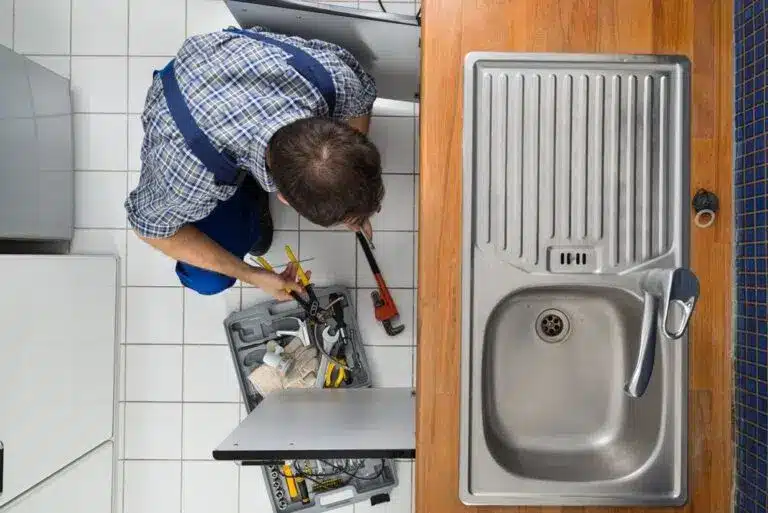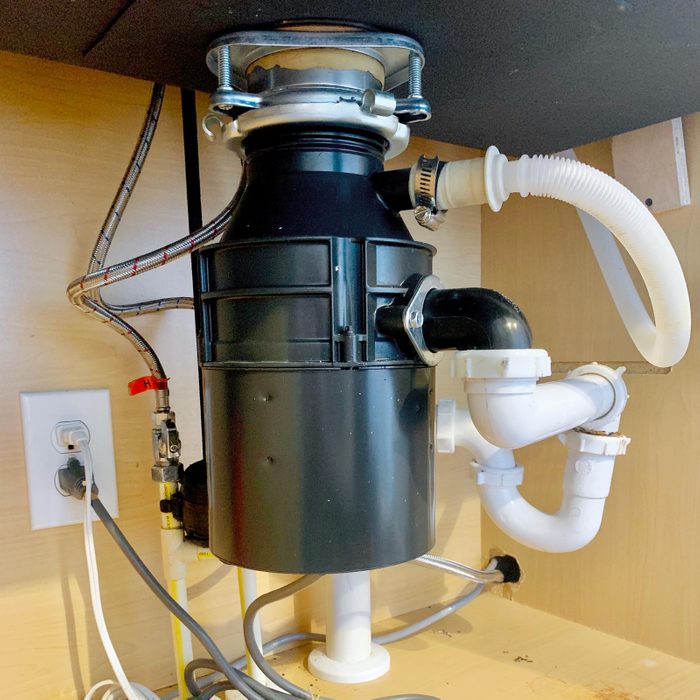Helpful Methods for Fixing a Dripping Garbage Disposal
Helpful Methods for Fixing a Dripping Garbage Disposal
Blog Article
Each person has got his or her own conception about Tips on Fixing a Leaking Garbage Disposal.

Garbage disposals are important kitchen home appliances that assist in dealing with food waste successfully. Nevertheless, a dripping garbage disposal can be a frustrating and untidy problem to take care of. Fortunately, lots of leakages can be repaired quickly with a couple of easy actions. In this article, we will go over just how to fix a leaking garbage disposal properly.
Introduction
Waste disposal unit are installed under kitchen sinks and are created to shred food waste right into smaller sized items, enabling it to go through the plumbing system quickly. While these gadgets are typically reputable, leaks can occur over time due to damage, loosened connections, or damage to the device.
Typical Sources Of Leaks in Garbage Disposals
Worn Seals and Gaskets
Seals and gaskets play a critical role in avoiding water from leaking out of the garbage disposal. Over time, these parts can weaken, leading to leakages around the disposal system.
Loose Connections
The connections in between the garbage disposal and the pipes system can become loosened over time, creating water to leakage out throughout procedure.
Fractures or Openings in the Disposal Unit
Physical damages to the waste disposal unit, such as cracks or holes in the housing, can additionally result in leaks.
Determining the Resource of the Leakage
Prior to trying to repair a leaking garbage disposal, it is important to recognize the resource of the leakage. This can generally be done with visual evaluation or by carrying out easy tests.
Visual Evaluation
Inspect the garbage disposal unit carefully for any kind of indications of water leakage. Pay close attention to locations around seals, gaskets, and link points.
Testing for Leakages
One method to test for leakages is by running water with the disposal device and looking for any noticeable signs of leak.
Tools and Products Needed for Taking Care Of a Leaking Waste Disposal Unit
Before beginning the repair procedure, gather the essential tools and products, including a screwdriver, adjustable wrench, plumbing professional's putty, substitute seals or gaskets, and epoxy or patching material for fixing splits or holes.
Step-by-Step Guide to Fixing a Dripping Waste Disposal Unit
Shut off the Power
Prior to trying any repair services, ensure that the power to the waste disposal unit device is shut off to prevent the danger of electric shock.
Locate the Leak
Determine the exact area of the leakage and determine the cause.
Tighten up Connections
Utilize a wrench to tighten up any loose connections between the disposal unit and the pipes system.
Change Seals or Gaskets
If the leakage is because of used seals or gaskets, get rid of the old elements and change them with brand-new ones.
Patching Cracks or Holes
For fractures or holes in the disposal system, usage epoxy or a suitable patching product to seal the broken area.
Checking the Garbage Disposal After Repair
When the repair is total, test the garbage disposal by running water through it to make certain that the leakage has actually been settled.
Preventive Upkeep Tips to Avoid Future Leakages
To stop future leakages, it is vital to execute routine upkeep on your waste disposal unit. This consists of maintaining it clean, avoiding placing non-food things or hard things down the disposal, and periodically checking for leaks or other concerns.
Conclusion
In conclusion, repairing a leaking garbage disposal is a relatively straightforward process that can be completed with basic tools and products. By following the actions laid out in this post and practicing precautionary upkeep, you can keep your garbage disposal in good working condition and avoid expensive repairs in the future.
What to Do About a Leaking Garbage Disposal
A leaking garbage disposal often goes unnoticed until you confront a sopping cabinet, a foul-smelling puddle, or an audible drip-drip-drip from the unit. The fix can be frustrating, too, because the leak can stem from a number of components in the system. Fortunately, with a little sleuthing, you can zero in on the leak and—depending on the exact location—stop the icky oozing and repair the component that caused it. Worst case scenario, if it turns out that the garbage disposal must be replaced, installing a new one is a reasonable do-it-yourself task for those with basic plumbing skills. Read on to keep the cash you’d otherwise hand over to a pro.
Prepare to find the leak
Prior to testing the garbage disposal for leaks, unplug it at the wall outlet and turn off the power from the breaker box to prevent electrical shock. Then insert a watertight sink stopper into your sink drain and wipe the unit dry with a clean cloth. In any handy container, mix a few drops of food coloring into a few cups of water, and pour the dyed water onto the sink stopper to help you locate the leak.
Investigate the source
the top, where the disposal meets the sink drain the side, where the dishwasher hose or main drain pipe connects to the disposal or the bottom of the unit Inspect each of these locations while gliding a light-colored rag over the unit; the dyed water will readily show on the rag and reveal the location of the leak. If a leak isn’t immediately apparent, remove the sink stopper and pour a few more cups of dyed water down the sink drain, then check for leaks again. Leaks near the top of the unit are more likely to show themselves while the sink is plugged, while side and bottom leaks are more noticeable while the sink is unplugged.
The metal sink flange that sits directly inside the sink drain is typically sealed around the top with plumber’s putty (a clay-like sealant) and then secured from under the sink with bolts. If the plumber’s putty deteriorates, or the bolts loosen, the flange can no longer form a watertight seal between the sink drain and the disposal—which could cause a leak at the top of the unit.
To reseal the leaky flange, you must first detach the garbage disposal. Start by loosening the screws securing the main drain pipe to the disposal, then loosen the screws in the metal clamp securing the dishwasher hose to the disposal and detach the drain pipe and dishwasher hose from the disposal. Loosen the screws in the mounting ring that connects the disposal to the metal mounting assembly beneath the sink, then pull down the disposal and carefully set it on a clean, dry surface. Loosen the bolts in the mounting assembly with a wrench, then pull down the mounting assembly and set it near the disposal.

Do you enjoy reading about Why Is My Garbage Disposal Leaking From the Bottom?? Place a comment down below. We will be interested to see your thoughts about this entry. We are looking forward to see you back again in the near future. In case you liked our article please don't forget to share it. Thank-you for your time invested reading it.
Call Today Report this page